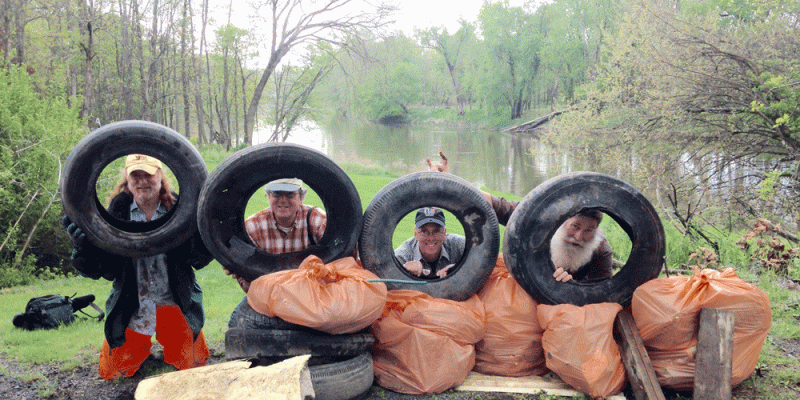
90 miles long, the Wallkill River flows north—from Lake Mohawk in Sparta, NJ, to the Rondout in Kingston and then into the Hudson. It runs through dozens of municipalities and three counties—Sussex in NJ and Orange and Ulster in NY. 12 water treatment plants discharge into the Wallkill River water shed, so it’s not surprising that the Wallkill has a high concentration of fecal contamination and pathogens, and may contain viruses that will make you sick.
Fortunately, local residents care deeply: a small army of ordinary citizens who want to help clean up their river has stepped up to assist, and in 2015 the Wallkill River Watershed Alliance was formed by local residents to “restore the ecological health of the Wallkill River and its watershed.” The most recent addition to the community effort is the recently formed Shawangunk Kill Watershed Alliance.
According to Dan Shapley, Water Quality Program Director at Riverkeeper, our water treatment plants do a good job of removing pathogens, but nutrients from urban run-off, sewage, farmland, fertilizers and manure percolate into the river.
Last August, 30 miles of the Wallkill River were covered with a bright green algal bloom. The DEC, in collaboration with the Wallkill River Watershed Alliance and the SUNY College of Environmental Science and Forestry, found that the toxins in the bloom at one site were 25 times the DEC’s high toxin limit; another site registered 85 times the limit. According to Shapley, “Slow water, nutrient levels and the right temperature are the triggers underlying the algal blooms.”
Riverkeeper (www.riverkeeper.org) works with the Wallkill Watershed Alliance to understand the bloom, using data gathered by “community scientists.” As of March of this year, they had tested 24 sites on 83 miles of the Wallkill. 85% failed to meet federal guidelines for safe swimming, and aquatic life is also imperiled. Riverkeeper and the Watershed Alliance shared this information with the public through press releases and via municipal leaders. Local newspapers also picked up the story.
Testing, however, is not the only way to help restore the river. For the last three years, the Wallkill Watershed Alliance has organized “Boat Brigades,” kayak outings where participants enjoy the river while also investigating and reporting on anything of concern. Other Alliance events include the “Tire Pull,” in August, in which volunteers removed tires discarded in the Wallkill. (For more volunteer opportunities visit www.facebook.com/wallkillriver.)
For the past six years, Riverkeeper has organized the Riverkeeper Sweep. In May, 1,790 volunteers removed over 38,000 pounds of trash from the Hudson River and its tributaries, while Gardiner residents working on the Wallkill filled 12 trash bags weighing 360 pounds, three recycling bags weighing 45 pounds and recovered 10 tires weighing 200 pounds.
In March, Riverkeeper and the Wallkill Watershed Alliance sent a letter to the state requesting funding for a water quality study that would have prioritized the most efficient way to reduce pollution on the Wallkill. For a river the size of the Wallkill with multiple pollution sources, prioritization is essential. Unfortunately, that money was not allocated in the state budget, but, according to Riverkeeper’s Shapley, “the DEC proceeded with two studies this summer that increased our understanding of excess nutrients and certain other contaminants of concern, and of Harmful Algal Blooms. So while we didn’t get what we sought, we did see the DEC respond to public concern by investing more time, energy and money in understanding what ails the Wallkill.”
The message is one of optimism that the concern and involvement of ordinary citizens partnering with organizations like Riverkeeper and the Wallkill River Watershed Alliance will restore the Wallkill River as “an ecological and recreational resource.”
